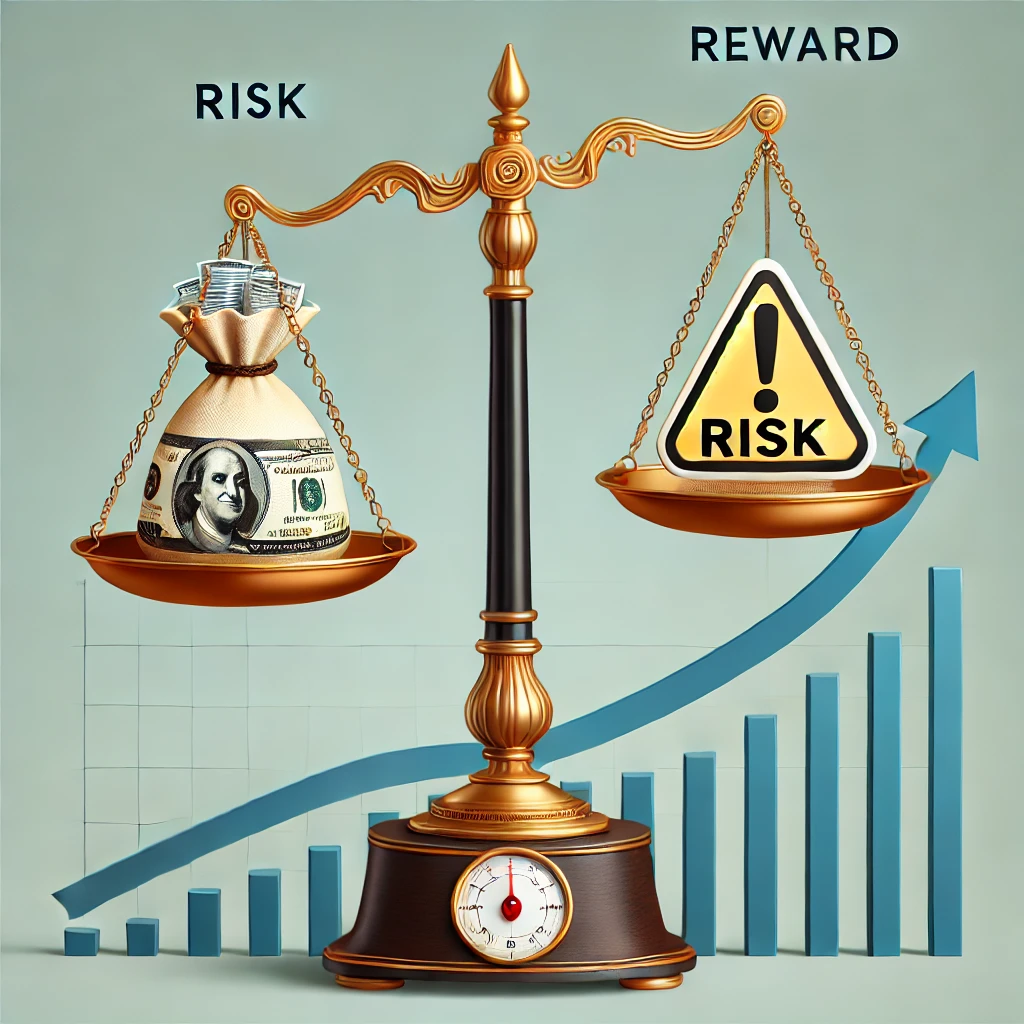In the world of investing, one of the most critical concepts every investor must understand is how to evaluate risk vs. reward in their investments. Balancing these two factors can make the difference between successful wealth building and costly losses. Whether you’re a seasoned investor or just starting, developing a framework to assess the potential risks and rewards of different investment opportunities is crucial. But how exactly do you measure these elements, and how can you ensure that your investments align with your financial goals? In this comprehensive guide, we will break down the strategies, tools, and mindsets that will help you make more informed decisions and ultimately succeed in your investing journey.
Understanding the Basics: Risk vs. Reward in Investments
At its core, evaluating risk vs. reward involves understanding the potential return on an investment in comparison to the amount of risk you are taking. While some investments promise high returns, they also tend to come with higher risks. Conversely, safer investments often yield more modest returns. The goal for any investor is to find the right balance that fits their individual risk tolerance and financial goals.
What is Investment Risk?
Investment risk refers to the likelihood that you might lose some or all of your investment or that the actual returns on your investment will be different from what you expected. Risks come in many forms, including market volatility, economic downturns, interest rate fluctuations, and even company-specific factors like management decisions.
The key types of investment risks include:
- Market Risk: The risk that the value of your investments will decrease due to changes in market conditions.
- Credit Risk: The risk that a borrower will default on a loan, bond, or other debt instrument.
- Liquidity Risk: The risk that you won’t be able to sell an investment quickly without impacting its price.
- Inflation Risk: The risk that inflation will erode the purchasing power of your returns.
What is Investment Reward?
On the flip side, investment reward refers to the potential profit you can earn from an investment. This can come in several forms, including:
- Capital Gains: The profit earned when you sell an asset for more than you paid for it.
- Dividends or Interest Payments: Regular income from stocks or bonds.
- Asset Appreciation: An increase in the value of an asset over time.
Investors are often faced with a trade-off: the higher the reward you seek, the more risk you’re likely to encounter. Conversely, if you want to minimize risk, you’ll likely have to accept lower returns.
Steps to Evaluate Risk vs. Reward in Your Investments
Evaluating risk vs. reward involves more than just picking investments that “seem right.” It requires a structured approach that accounts for your financial situation, goals, and risk tolerance. Here are key steps to help you assess risk vs. reward in any investment.
1. Assess Your Risk Tolerance
Before diving into any investment, it’s essential to understand your own risk tolerance. Risk tolerance is your personal ability and willingness to endure losses in pursuit of higher gains. Some factors to consider when determining your risk tolerance include:
- Time Horizon: How long you plan to hold the investment.
- Financial Goals: Are you investing for retirement, a house, or short-term income?
- Income Stability: A stable income might allow for more aggressive investments.
- Personality: Some people are naturally more risk-averse, while others are willing to take more chances.
2. Analyze the Investment’s Risk Profile
Once you understand your risk tolerance, the next step is to evaluate the risk profile of the specific investment you’re considering. Some investments, like government bonds, are generally considered low-risk, while others, like individual stocks or cryptocurrencies, carry more significant risks. When analyzing an investment’s risk profile, consider:
- Historical Performance: While past performance isn’t a guarantee of future results, it can offer insights into how volatile or stable the investment has been over time.
- Market Conditions: Assess the broader market conditions affecting the asset. A booming economy might reduce risks, while a recession might increase them.
- Economic Factors: Economic indicators like interest rates, inflation, and GDP growth can impact the risk level of your investments.
3. Estimate the Potential Rewards
After analyzing the risks, it’s time to estimate the potential rewards. Calculating the expected return of an investment helps determine whether the potential payoff is worth the risk. Here are some ways to estimate rewards:
- Average Annual Return: Look at the historical average annual return of the investment.
- Yield: For bonds and dividend-paying stocks, check the yield to understand the income potential.
- Growth Projections: If investing in a company, analyze its projected earnings and industry growth.
It’s essential to weigh these potential rewards against the risks you’ve identified to determine if the investment aligns with your goals.
4. Diversify Your Portfolio
Diversification is one of the most effective ways to manage risk while still pursuing rewards. By spreading your investments across different asset classes—such as stocks, bonds, and real estate—you reduce the impact of a poor-performing asset on your overall portfolio. Diversification helps smooth out returns and reduce the volatility of your investments.
Common Investment Strategies for Balancing Risk and Reward
There are several popular investment strategies designed to balance risk and reward. Each strategy depends on your financial goals, time horizon, and risk tolerance.
1. Asset Allocation
Asset allocation refers to how you divide your investment portfolio among different asset classes—like stocks, bonds, and cash. The goal of asset allocation is to create a balance that fits your risk tolerance and financial goals. Younger investors with a longer time horizon might allocate more to stocks, while retirees might prefer more conservative allocations like bonds and cash.
2. Dollar-Cost Averaging
Dollar-cost averaging is a strategy where you invest a fixed amount of money at regular intervals, regardless of market conditions. This approach reduces the risk of investing a lump sum at the wrong time and can help smooth out the highs and lows of market volatility.
3. Value Investing
Value investing involves buying undervalued stocks that you believe the market has mispriced. This strategy carries moderate risk but offers the potential for substantial rewards if the market eventually recognizes the stock’s true value.
4. Growth Investing
Growth investors seek out companies that are expected to grow faster than the average. These investments often carry higher risks since they tend to be in industries with rapid change, but the potential rewards can be significant.
The Role of Emotional Discipline in Evaluating Risk vs. Reward
One of the most overlooked factors in evaluating risk vs. reward is emotional discipline. Fear and greed are powerful emotions that can lead investors to make irrational decisions. For example, panic selling during a market dip can lock in losses, while buying into a hot stock at its peak can result in buying high and selling low.
Evaluating Risk vs. Reward in Different Asset Classes
Different asset classes have varying levels of risk and reward, and understanding these differences can help you make better investment decisions. Let’s take a closer look at some of the most common asset classes.
1. Stocks
Stocks offer the potential for high rewards but come with higher risks due to market volatility and company-specific risks. Individual stocks, particularly those in emerging industries, can provide substantial gains but are subject to market swings.
2. Bonds
Bonds are generally less risky than stocks, as they provide fixed interest payments. However, bonds carry interest rate risk, credit risk, and inflation risk. Government bonds are considered among the safest investments, while corporate bonds carry higher risks.
You can also read; How to Choose Between Active and Passive Investing
3. Real Estate
Real estate investments can provide a mix of capital appreciation and income through rent payments. However, real estate is illiquid, and market downturns can impact property values significantly.




